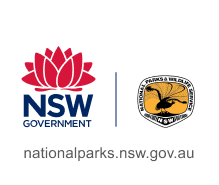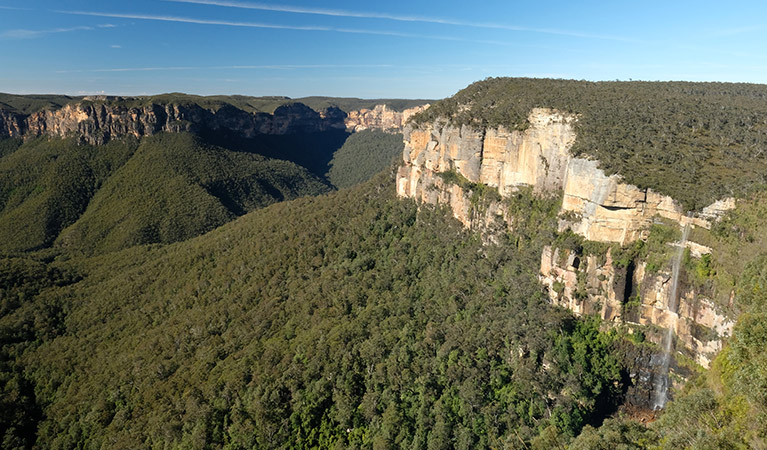Overview
Blackheath area spoils you with amazing walks, mountain biking and cliff top views in Blue Mountains National Park. Visit Govetts Leap, conquer the Grand Canyon and explore the Grose Wilderness.
Read more about Blackheath area
Blackheath’s natural beauty and activities attract adventurers, families, overseas visitors and Sydneysiders. Govetts Leap and Evans lookout are top of the to do list, boasting some of the best-known views in the park. Gaze across the Grose Valley with its red sandstone cliffs and deep gorges. At 180m Govetts Leap (Bridal Veil) Falls is the tallest single drop waterfall in the Blue Mountains.
Enjoy a picnic with a view or get back to nature along Cliff Top walking track. Pulpit Rock lookout will make you feel like you’re on top of the world. The challenging Govetts Leap descent takes you deep into the valley, past hanging swamps and waterfalls. Adventure seekers can get their thrills cycling Burramoko Ridge or explore a canyon without all the gear on Grand Canyon walk.
Blue Mountains Heritage Centre is a perfect introduction to the Greater Blue Mountains Area World Heritage Property. Drop in for maps and information, use the free wi-fi and check out the virtual reality canyoning tour. Nearby, the wheelchair accessible Fairfax Heritage track is a great place to spot waratahs and flowering grass trees in spring.
After a day sightseeing, pitch your tent at Perrys Lookdown campground then watch as the cliffs glow pink under the setting sun. The towering eucalypts rising from the valley floor form the historic Blue Gum Forest—the birthplace of the conservation movement in NSW. Intrepid hikers can reach this wilderness from Perrys Lookdown or Pierces Pass. It’s best combined with a night under the stars at the remote Acacia Flat campground.
Local alerts
For the latest updates on fires, closures and other alerts in this area, see https://www.nationalparks.nsw.gov.au/visit-a-park/parks/blackheath-area/local-alerts
Map
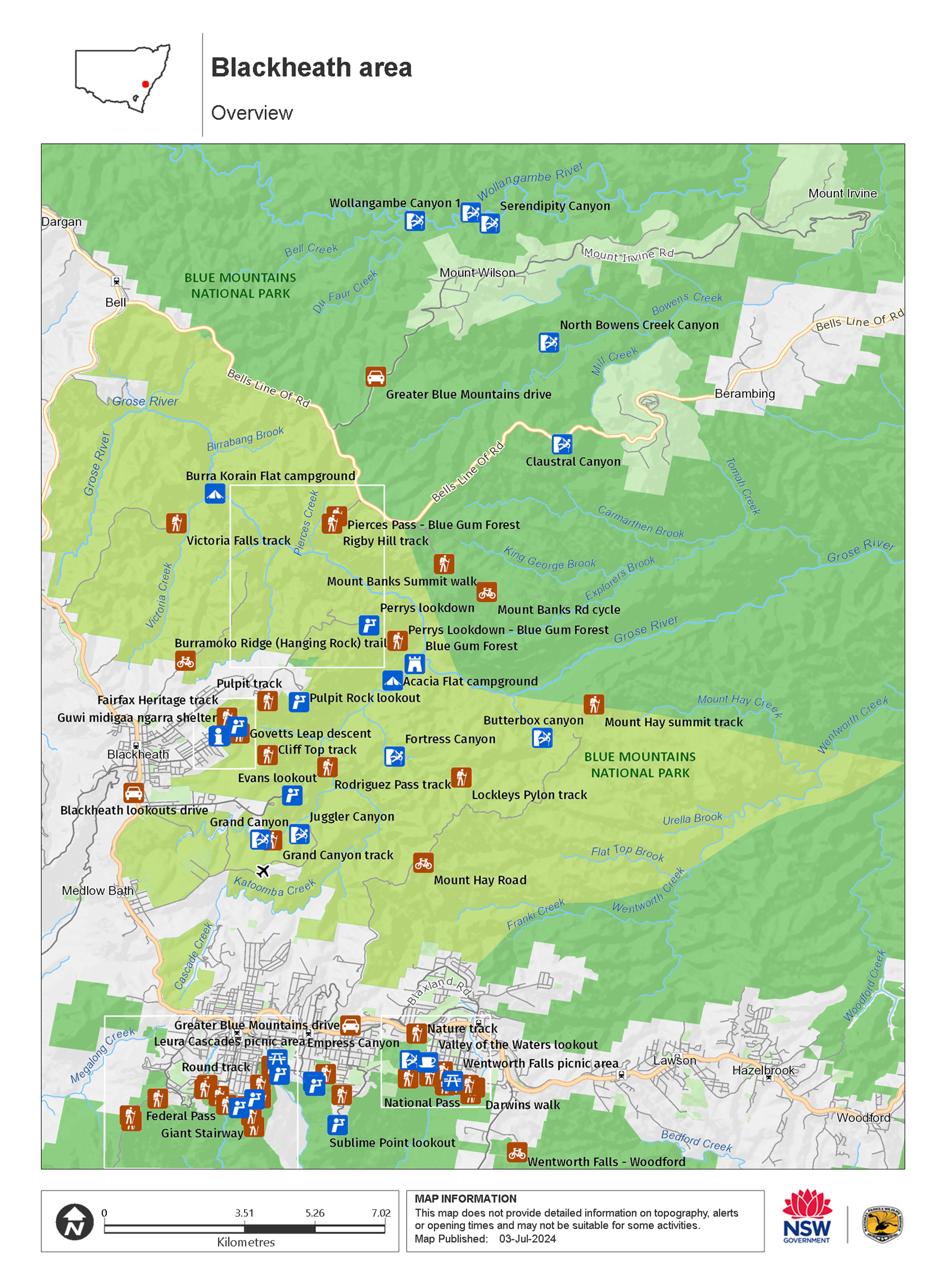
Map
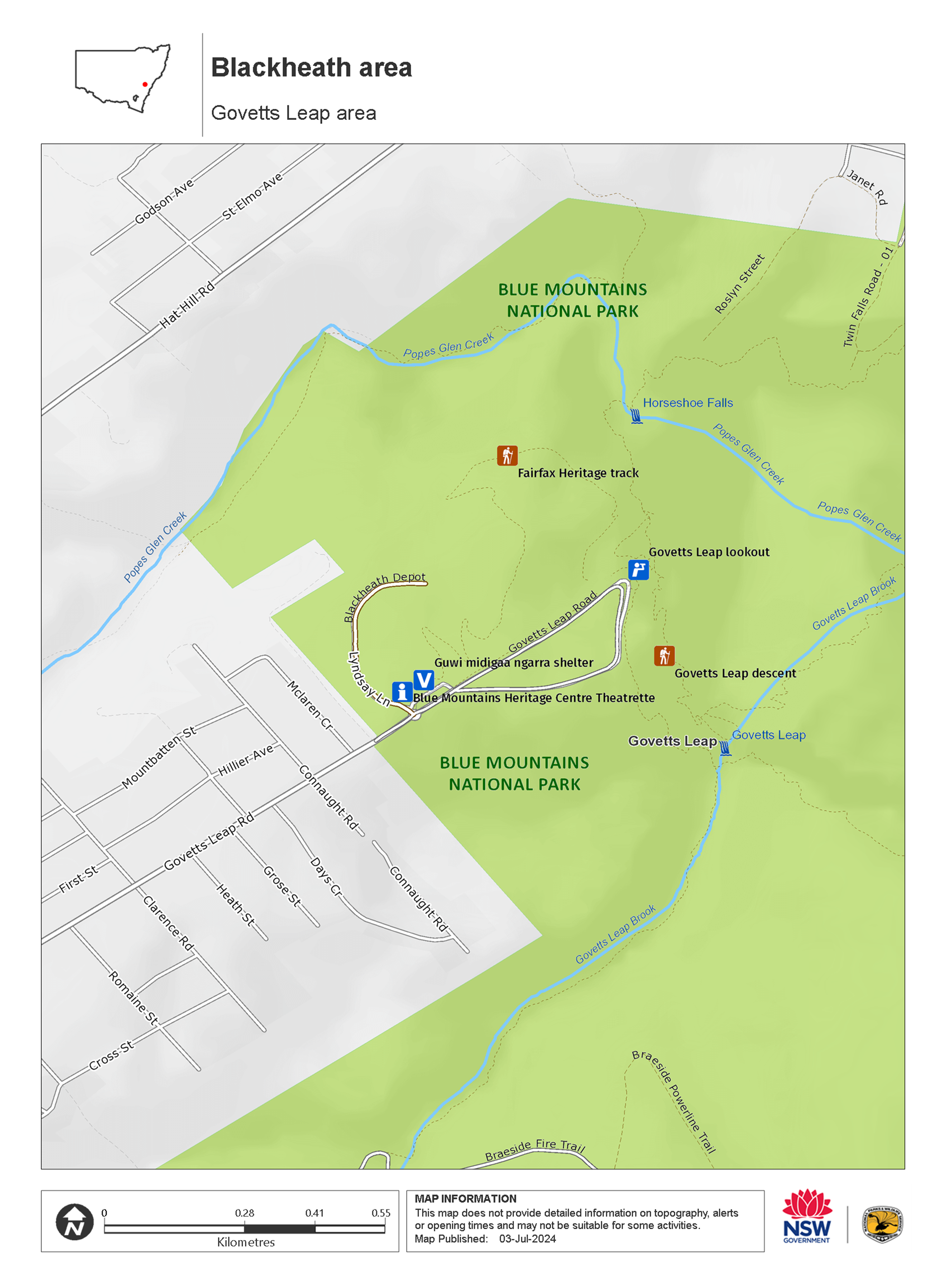
Map
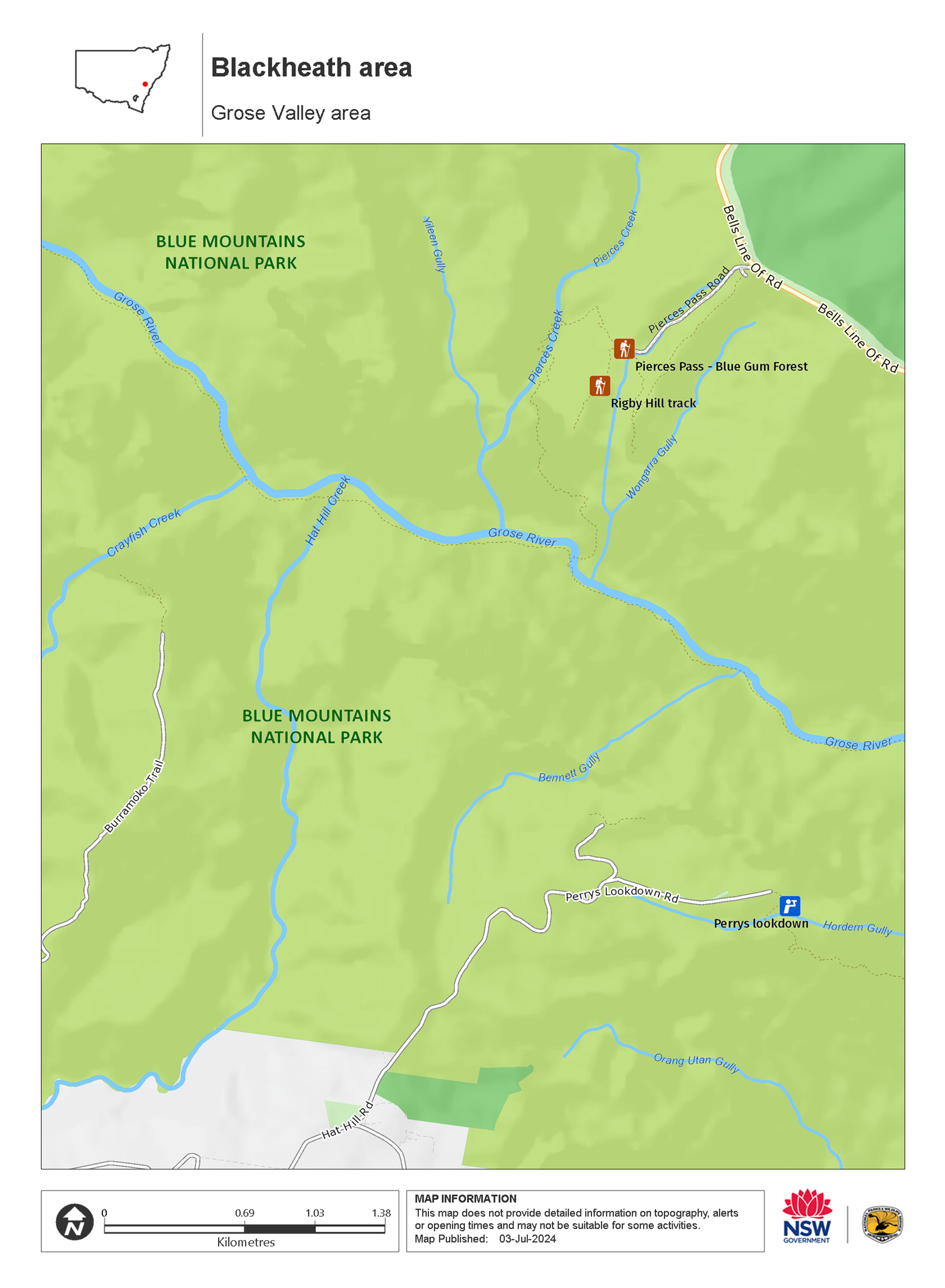
Map legend
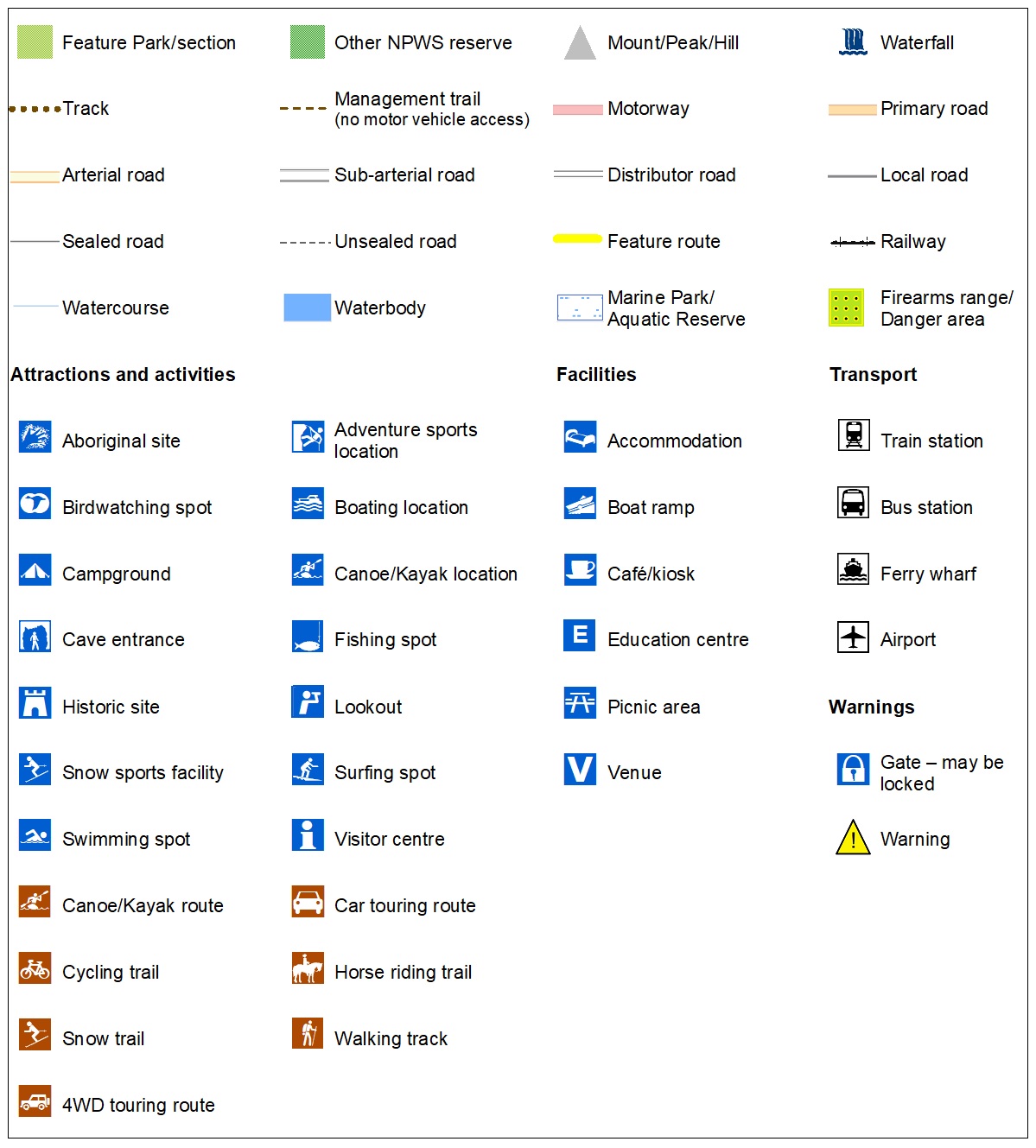
Contact
- in Blue Mountains National Park in the Sydney and surrounds region
Blackheath area is always open but may have to close at times due to poor weather or fire danger.
-
-
Blue Mountains Heritage Centre and Blackheath office
02 4787 8877
Contact hours: 9am to 4pm daily. Closed Christmas Day. - 270 Govetts Leap Road, Blackheath NSW 2785
-
Email: bluemountains.heritagecentre@environment.nsw.gov.au
-
Blue Mountains Heritage Centre and Blackheath office
Visitor info
All the practical information you need to know about the Blackheath area.
Getting there and parking
To get to the Blackheath area of Blue Mountains National Park:
From Sydney:
- Head west on the Western Motorway (M4) and Great Western Highway.
- Blackheath is around 12.5km beyond Katoomba. Turn right onto Govetts Leap Road and follow to the end to reach Blue Mountains Heritage Centre.
- You can also take Bells Line of Road from Richmond, then turn south on the Darling Causeway which connects with the Great Western Highway at Mount Victoria.
From Lithgow:
- Head east on the Great Western Highway.
- Blackheath is around 28km from Lithgow.
- Mount Victoria is around 9km from Lithgow.
Parking Show more
- Accessible parking at Blue Mountains Heritage Centre See on map
- Butterbox Canyon See on map
- Accessible parking at Evans lookout See on map
- Fortress Canyon See on map
- Accessible parking at Govetts Leap lookout See on map
- Grand Canyon track See on map
- Jugglers Canyon See on map
- Perrys lookdown See on map
- Pulpit Rock lookout See on map
- Victoria Falls walking track See on map
By bike
Visit Transport for NSW for cycling and bike transport information.
By public transport
- Regular trains run from Sydney Central Station to Blackheath and Mount Victoria. The trip takes about 2 hours. Visit Transport for NSW to plan your trip.
- Daily buses run between Katoomba and Blackheath, including wheelchair-accessible services. Buses run Monday to Friday from Katoomba to Mount Victoria. Visit the Blue Mountains transit website for information.
Best times to visit
Blackheath area spoils you with its diverse attractions all year. Here are some highlights.
Autumn
Autumn brings crisp mountain air and clear blue skies tempting you to get back to nature. Set out on a gentle stroll, heart-pumping hike, exhilarating mountain bike ride or trail run. The steep descents and challenging climbs to Grand Canyon or Blue Gum Forest will soon warm you up. Camp under the stars and fall asleep to the whispers of the wilderness. You’ll find it hard to believe Sydney is only 2hrs away.
Spring
Spring is prime time for wildflowers and birdwatching. Spot pink boronias, heath banksia and yellow conesticks that look like ice cream cones. In November the iconic waratah flowers along Fairfax Heritage track, while grass trees flower on the escarpment. Look out for king parrots and nectar-loving honeyeaters in the trees. This is also a great time to explore on 2 wheels. Ride along Mount Hay Road surrounded by flowering heathland. If you’re lucky you might even see a giant dragonfly as they emerge in late October.
Summer
Rediscover the great outdoors on a bushwalk or try something new like an introductory canyoning tour. After a summer rain shower the waterfalls are in full flow. Mossy hanging swamps drip crystal clear water, cooling you off along Govetts Leap descent. The fine weather is perfect for evening picnics and stunning sunsets from the lookouts. Need to keep the kids entertained? Check out the heritage centre’s tours and activities during school holidays.
Winter
You may catch a dusting of snow in the upper mountains at Blackheath and Mount Victoria. Winter-blooming sunshine wattle brings splashes of yellow alongside walking tracks. If you prefer to explore from the warmth of your car, Blackheath lookouts drive is an easy way to see the area’s world-class views. Detour to Wind Eroded Cave and Anvil Rock on your way to Perrys Lookdown, and don’t miss Pulpit Rock. Council-owned Hargreaves and Mount Blackheath lookouts offer sweeping views over the Megalong and Kanimbla Valleys.
Facilities
Toilets Show more
- Acacia Flat campground
- Blue Mountains Heritage Centre
- Burra Korain Flat campground
- Evans lookout
- Fairfax Heritage walking track
- Govetts Leap descent
- Govetts Leap lookout
- Grand Canyon track
- Jugglers Canyon
Picnic tables
Cafe/kiosk
Drinking water
Wireless internet
Electric power
Maps and downloads
Permitted
Walking and cycling groups in the Grose Wilderness are limited to 8 people.
Camp fires and solid fuel burners
Campfires are permitted only in the fire pits provided. Bring your own firewood. Campfires and solid fuel burners may be prohibited during high fire season.
Camping
In designated campgrounds only.
Prohibited
Pets
Pets and domestic animals (other than certified assistance animals) are not permitted. Find out which regional parks allow dog walking and see the pets in parks policy for more information.
Smoking
NSW national parks are no smoking areas.
Visitor centre
-
Blue Mountains Heritage Centre
270 Govetts Leap Road, Blackheath NSW 2785 - 9am to 4pm daily. Closed Christmas Day.
- 02 4787 8877
Nearby towns
Lithgow (28 km)
Hassans Walls Lookout, near Lithgow, is the highest in the Blue Mountains. Admire Mt Wilson, Mt York, Mt Tarana and Mt Blaxland as well as the pretty Hartley Valley below. To the south are the Kanimbla and Megalong valley and Mt Bindo. While there, go for a walk or ride around the lookout.
Blackheath (2.5 km)
The magnificent Govetts Leap waterfall drops a whopping 180m to the base of the cliff. The 'ozone-laden' air of the Blue Mountains was promoted as a health tonic since the early 1800s, and when you get there, you'll realise why.
Katoomba (12.5 km)
Katoomba is at the heart of most of the stunning natural attractions that make up the Blue Mountains National Park. You can admire deep valleys, sandstone plateaus, waterfalls and native animals from the many walking trails and lookouts near Katoomba.
Learn more
Blackheath area is a special place. Here are just some of the reasons why:
Plants and animals protected in this park
Animals
-

Wedge-tailed eagle (Aquila audax)
With a wingspan of up to 2.5m, the wedge-tailed eagle is Australia’s largest bird of prey. These Australian animals are found in woodlands across NSW, and have the ability to soar to heights of over 2km. If you’re bird watching, look out for the distinctive diamond-shaped tail of the eagle.
-

Long-nosed bandicoot (Perameles nasuta)
A nocturnal marsupial and one of the smaller Australian native animals, the long-nosed bandicoot is found across eastern Australia. Populations in the Sydney region have dwindled since European settlement, leaving only endangered colonies in inner western Sydney and at North Head, near Manly. The long-nosed bandicoot has grey-brown fur and a pointed snout which it uses to forage for worms and insects.
-

Common brushtail possum (Trichosurus vulpecula)
One of the most widespread of Australian tree-dwelling marsupials, the common brushtail possum is found across most of NSW in woodlands, rainforests and urban areas. With strong claws, a prehensile tail and opposable digits, these native Australian animals are well-adapted for life amongst the trees.
-

Yellow-tailed black cockatoo (Calyptorhynchus funereus)
The yellow-tailed black cockatoo is one of the largest species of parrot. With dusty-black plumage, they have a yellow tail and cheek patch. They’re easily spotted while bird watching, as they feed on seeds in native forests and pine plantations.
-

Swamp wallaby (Wallabia bicolor)
The swamp wallaby, also known as the black wallaby or black pademelon, lives in the dense understorey of rainforests, woodlands and dry sclerophyll forest along eastern Australia. This unique Australian macropod has a dark black-grey coat with a distinctive light-coloured cheek stripe.
-

Common ringtail possum (Pseudocheirus peregrinus)
Commonly found in forests, woodlands and leafy gardens across eastern NSW, the Australian ringtail possum is a tree-dwelling marsupial. With a powerful tail perfectly adapted to grasp objects, it forages in trees for eucalypt leaves, flowers and fruit.
-

Eastern blue-tongue lizard (Tiliqua scinciodes)
The eastern blue-tongue lizard, one of the largest skinks in Australia, is found throughout most of NSW. When threatened, the eastern blue-tongue lizard displays its blue tongue in a wide-mouthed intimidating show. Not an agile animal, they feed on slow-moving beetles and snails.
-

Eastern water dragon (Intellagama lesueurii lesueurii)
The eastern water dragon is a subaquatic lizard found in healthy waterways along eastern NSW, from Nowra to halfway up the Cape York Pensinsula. It’s believed to be one of the oldest of Australian reptiles, remaining virtually unchanged for over 20 million years.
-

Sugar glider (Petaurus breviceps)
The sugar glider is a tree-dwelling Australian native marsupial, found in tall eucalypt forests and woodlands along eastern NSW. The nocturnal sugar glider feeds on insects and birds, and satisfies its sweet tooth with nectar and pollens.
-

Superb lyrebird (Menura novaehollandiae)
With a complex mimicking call and an elaborate courtship dance to match, the superb lyrebird is one of the most spectacular Australian animals. A bird watching must-see, the superb lyrebird can be found in rainforests and wet woodlands across eastern NSW and Victoria.
Plants
-
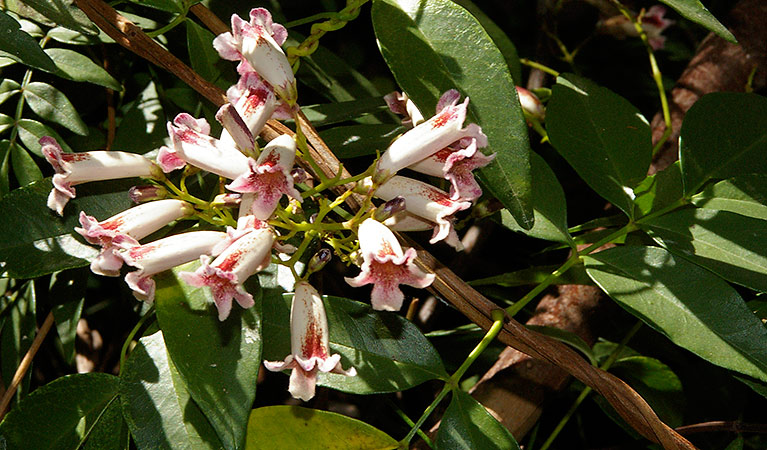
Wonga wonga vine (Pandorea pandorana)
The wonga wonga vine is a widespread vigorous climber usually found along eastern Australia. A variation of the plant occurs in the central desert, where it resembles a sprawling shrub. One of the more common Australian native plants, the wonga wonga vine produces bell-shaped white or yellow flowers in the spring, followed by a large oblong-shaped seed pod.
-

Old man banksia (Banksia serrata)
Hardy Australian native plants, old man banksias can be found along the coast, and in the dry sclerophyll forests and sandstone mountain ranges of NSW. With roughened bark and gnarled limbs, they produce a distinctive cylindrical yellow-green banksia flower which blossoms from summer to early autumn.
-

Blueberry ash (Elaeocarpus reticulatus)
The blueberry ash is a rainforest shrub which produces blue olive-shaped berries and spectacular bell-shaped flowers, which often appear on the plant together. It is a tall slender shrub or small tree found in rainforest, tall eucalypt forest and coastal bushland in eastern NSW, south-east Queensland and Victoria.
-

Coachwood (Ceratopetalum apetalum)
Coachwood trees are Australian native plants that grow in warm temperate rainforests along coastal NSW. Also known as scented satinwood, the mottled grey bark of the coachwood has horizontal markings and a delicate fragrance.
-

Coachwood (Ceratopetalum apetalum)
Coachwood trees are Australian native plants that grow in warm temperate rainforests along coastal NSW. Also known as scented satinwood, the mottled grey bark of the coachwood has horizontal markings and a delicate fragrance.
-
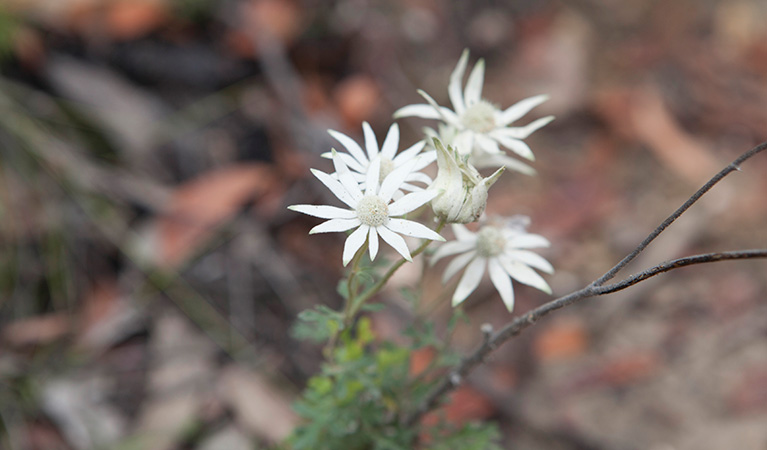
Flannel flower (Actinotus helianthi)
The delicate flannel flower is so named because of the soft woolly feel of the plant. Growing in the NSW south coast region, extending to Narrabri in the Central West and up to south-east Queensland, its white or pink flowers bloom all year long, with an extra burst of colour in the spring.
-

Grass tree (Xanthorrea spp.)
An iconic part of the Australian landscape, the grass tree is widespread across eastern NSW. These Australian native plants have a thick fire-blackened trunk and long spiked leaves. They are found in heath and open forests across eastern NSW. The grass tree grows 1-5m in height and produces striking white-flowered spikes which grow up to 1m long.
-

Scribbly gum (Eucalyptus haemastoma)
Easily identifiable Australian native plants, scribbly gum trees are found throughout NSW coastal plains and hills in the Sydney region. The most distinctive features of this eucalypt are the ‘scribbles’ made by moth larva as it tunnels between the layers of bark.
-

Smooth-barked apple (Angophora costata)
Smooth-barked apple gums, also known as Sydney red gum or rusty gum trees, are Australian native plants found along the NSW coast, and in the Sydney basin and parts of Queensland. Growing to heights of 15-30m, the russet-coloured angophoras shed their bark in spring to reveal spectacular new salmon-coloured bark.
-

Waratah (Telopea speciosissima)
The beautiful waratah is not only the NSW floral emblem, it's also one of the best-known Australian native plants. This iconic Australian bush flower can be found on sandstone ridges around Sydney, in nearby mountain ranges and on the NSW South Coast. The waratah has a vibrant crimson flowerhead, measuring up to 15cm across, and blossoms in spring.
Environments in this area
School excursions (2)
- Grand Canyon: Environmental change and management, Stage 5 (Years 9-10), Geography
- Living with fire, Stage 3 (Years 5-6), Geography
What we're doing
Blackheath area has management strategies in place to protect and conserve the values of this park. View the detailed park and fire management documents. Here is just some of the work we’re doing to conserve these values:
General enquiries
- National Parks Contact Centre
- 7am to 7pm daily
- 1300 072 757 (13000 PARKS) for the cost of a local call within Australia excluding mobiles
- parks.info@environment.nsw.gov.au
Contact
- in Blue Mountains National Park in the Sydney and surrounds region
Blackheath area is always open but may have to close at times due to poor weather or fire danger.
-
-
Blue Mountains Heritage Centre and Blackheath office
02 4787 8877
Contact hours: 9am to 4pm daily. Closed Christmas Day. - 270 Govetts Leap Road, Blackheath NSW 2785
-
Email: bluemountains.heritagecentre@environment.nsw.gov.au
-
Blue Mountains Heritage Centre and Blackheath office
In this area:
Things to do (48)
- Adventure sports (8)
- Birdwatching and wildlife encounters (6)
- Cycling (4)
- Environmental appreciation/study (4)
- Historic heritage (2)
- Other experiences (4)
- Photography (1)
- Picnics and barbecues (6)
- Road trips and car/bus tours (2)
- Sightseeing (18)
- Visitor centres (1)
- Walking (23)
- Waterfalls (10)
- Wildflowers (seasonal) (5)
